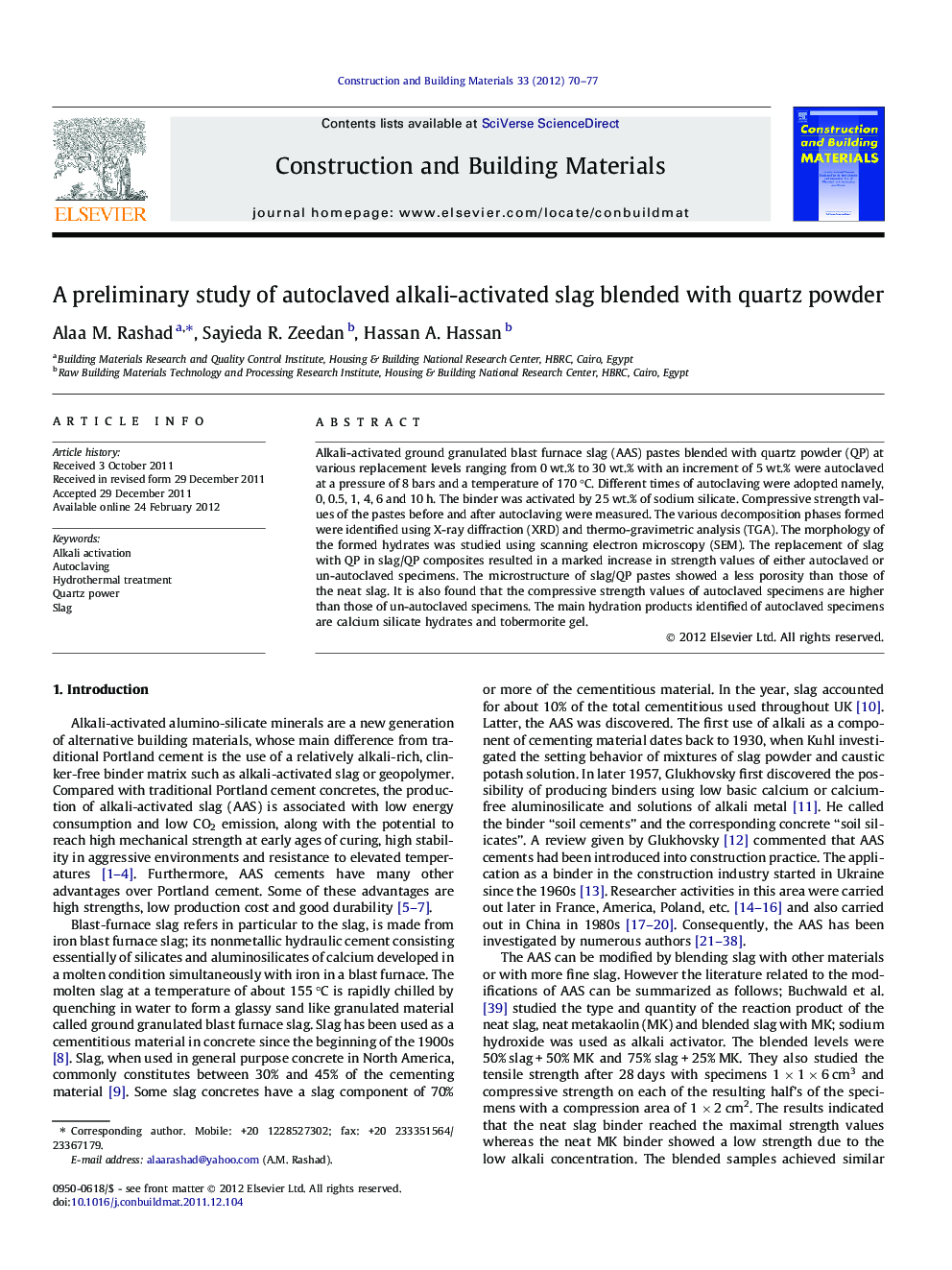| Article ID | Journal | Published Year | Pages | File Type |
|---|---|---|---|---|
| 258801 | Construction and Building Materials | 2012 | 8 Pages |
Alkali-activated ground granulated blast furnace slag (AAS) pastes blended with quartz powder (QP) at various replacement levels ranging from 0 wt.% to 30 wt.% with an increment of 5 wt.% were autoclaved at a pressure of 8 bars and a temperature of 170 °C. Different times of autoclaving were adopted namely, 0, 0.5, 1, 4, 6 and 10 h. The binder was activated by 25 wt.% of sodium silicate. Compressive strength values of the pastes before and after autoclaving were measured. The various decomposition phases formed were identified using X-ray diffraction (XRD) and thermo-gravimetric analysis (TGA). The morphology of the formed hydrates was studied using scanning electron microscopy (SEM). The replacement of slag with QP in slag/QP composites resulted in a marked increase in strength values of either autoclaved or un-autoclaved specimens. The microstructure of slag/QP pastes showed a less porosity than those of the neat slag. It is also found that the compressive strength values of autoclaved specimens are higher than those of un-autoclaved specimens. The main hydration products identified of autoclaved specimens are calcium silicate hydrates and tobermorite gel.
Graphical abstract0, 5, 10, 15, 20, 25 and 30-wt.% quartz powder (QP) was replaced slag in alkali-activated slag (AAS). The various hardened pastes were exposed to autoclaving condition at a pressure of 8 bars and temperature of 170 °C for 0, 0.5, 1, 4, 6 and 10 h. The compressive strengths before and after autoclaving were determined and compared with their original.Figure optionsDownload full-size imageDownload as PowerPoint slideHighlights► Quartz powder (QP) affected the hydraulic reactivity of the slag considerably. ► The reactivity increased with increasing QP, up to 30%. ► Slag replacement with QP in alkali activation was found to be beneficial in term of strength. ► Under the autoclaving condition, AAS and AAS/QP systems showed better performance. ► Autoclaving enhanced formation of calcium silicate hydrates including tobermorite.
